All About Natural Emeralds
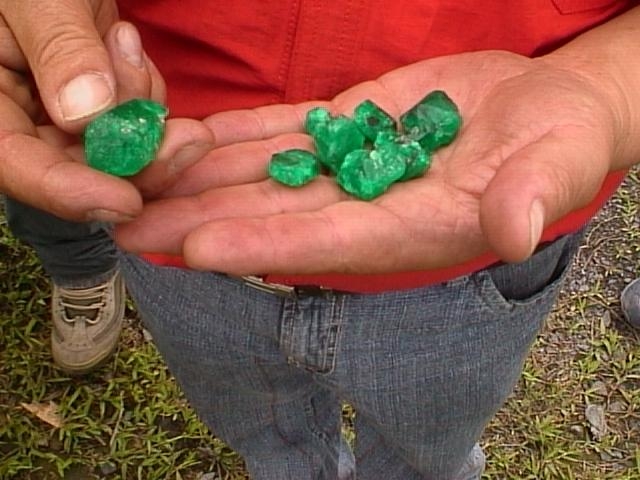
Emerald is a green variety of the mineral beryllium. It acquires its green color from minute amounts of chromium and vanadium in the mineral’s crystalline lattice structure. Emerald has a hardness range of 7.5 to 8 on the Mohs’s scale, allowing it to take a beautiful polish when finely cut.
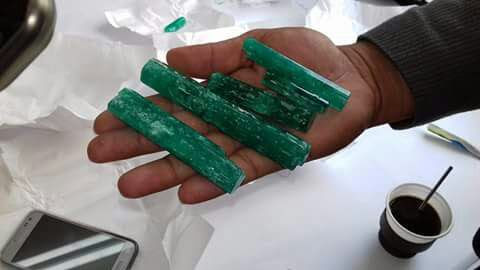
Unlike diamonds, which have their own grading system, natural emeralds are considered one of the top precious stones with an ancient pedigree and are valued in a distinctly different way. If you are not a gemologist, the jargon and methods used to grade quality in gemstones can be hard to understand. But do not worry, you need to know simple but important things to make your own decision. For someone looking for an engagement ring, for the ones that love gems and want some idea of what to look for, or for someone looking for that special gift that shows how much you care, there are four very important qualities of natural emeralds that you can assess yourself.
Visit our Emerald Rings Collection
Following are the primary characteristics affecting the value in a natural emerald;
COLOR IN NATURAL EMERALDS
The green color found in emeralds are the main factor in establishing both their value and quality. The unique green tint is exclusive to natural emeralds, and one that you will not find in other natural gemstones. Color is divided into: Hue, Tonal Grade, and Saturation.
Emerald color is expressed as hue, tonal grade, and saturation.
Hue
Hue refers to the exact green color the emerald displays. Names given to various greens help us to visualize the subtle differences in the color--lime green, pine, mint…etc.
Tonal Grade
The green tone establishes the degree of darkness or lightness of the green color in the gem. Natural emeralds present a wide variety of green tones. The most desirable emeralds are medium to dark green.
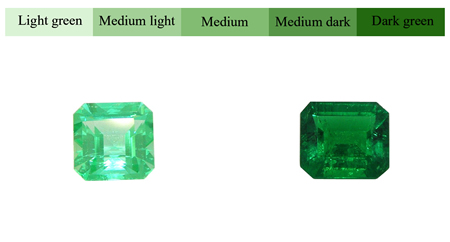
Color Saturation
How vivid and how much power the green has is as important as how dark it is. That is what we call color saturation, which is the color's strength or intensity, ranging from a dull hue (green) to a pure vivid hue. For example, you will see how the emeralds in the following pictures have very close tonal grade but very different color saturation.
The richer the emerald’s color, the more it costs. Emerald prices soar as the depth and saturation of color increases.
Just as the right combination of ingredients can raise an ordinary recipe to gourmet status, the slightest variations in tone and saturation can make a tremendous difference in price.
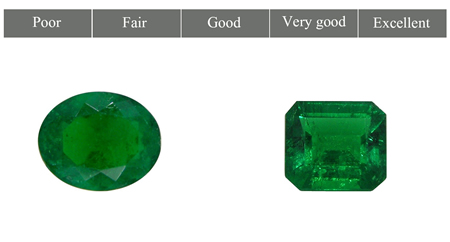
Color is a very important factor in the quality and value of natural emeralds but is not the only one. Clarity is also really important as we will see next.
Visit our Emerald Earrings Collection
CLARITY IN EMERALDS
Clarity in emeralds speaks about what the gem looks like on the inside and this is what makes an emerald a different gemstone than any other. Most emeralds present inclusions that are small bits of other minerals, gas, liquid, and crystals that the emeralds take on in the crystallization process. About 99% of all natural emeralds will present this features. Inclusions in emeralds are sometimes easy to see without a magnifying glass or microscope. What in other gems may be considered “flaws” or “imperfections”, in emeralds is totally natural and is one of the things we try to find every time we seem them under a loupe. That is why gemologists, appraisers and experts don't use the same criteria to judge clarity in emeralds than they use for other gems like diamonds and topazes.
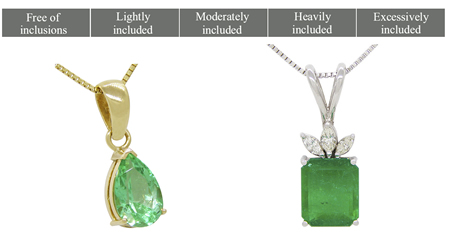
GIA (Gemological Institute of America) categorizes three clarity types for colored gems:
- Type I gemstones, often virtually inclusion-free, such as aquamarine, citrine, topaz and green tourmaline.
- Type II gemstones, usually included, such as ruby, sapphire, garnet, peridot, amethyst and spinel.
- Type III gemstones, almost always included, such as emerald and red tourmaline.
So... please don't be afraid when you see an inclusion in an emerald. It is a natural part of this gem.

Inclusions in Colombian emeralds most of the time appear as elongated and thin shapes with peaked ends. They are also called “jardin” or gardens because they look like branches and plant roots. Like finger prints, each emerald presents its own internal “garden” or layout for its inclusions. Be careful that they don't look like bubbles, they don't look arranged in a specific order, and they don't appear in one specific spot in the gem.
When does clarity affect the price in an emerald? When it presents too many inclusions, when the gem does not look like a crystal because it is excessively included, and when it is too difficult to see facets on the pavilion, the back part of the emerald.
Inclusions can compromise the durability of a stone and lessen the value when they are close to the surfaces of the gem. Some inclusions can create fractures in the emerald. If any of these inclusions are at the surfaces the stone can be broken easily through that part.
In general, the fewer the inclusions, the higher the value of the gem. Of course, clarity is an important factor in evaluating an emerald but it is not the most relevant. Inclusions in emeralds are very special. Expect to find them. Actually, any emerald without them is immediately suspected as being a synthetic or an imitation.
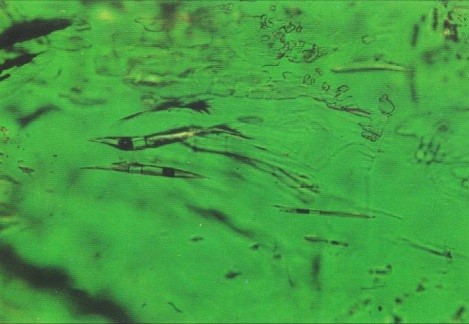

CARAT WEIGHT
Most of the time when we indicate the size of an emerald we do it in carats. A carat is a unit of weight equivalent to 0.20 grams. Both are directly related and most of the time that we talk about size we talk about carat weight more than millimeters or inches.
1.00 carat (Ct.) = 0.20 grams
For people not familiar with jewelry and precious gems the term carat can be confused with “Karat”, which is completely different. The term karat is used as a measurement of gold purity (24 K gold, 18 K gold, 14K gold) and has nothing to do with a gem’s size or weight.
As the carat weight increases so does the price of the gem and more importantly, the price per carat of the stone. This can be calculated by dividing stone price by its carat weight. Larger emeralds are rarer than smaller ones and very difficult to recover from the mines. On average, they must remove 5 tons of ore for every gem-quality emerald over 1 carat. A 3-carat emerald will cost more than three emeralds of 1.00 carat each of the same quality because they are exceedingly rare.
DURABILITY
While some online information about emeralds indicates how delicate the gem is, in reality, emeralds are not at all fragile. The Mohs scale method identifies a gemstone’s relative hardness. For example, diamonds rank 10 at the top of the scale. Next are ruby and sapphire at 9; topaz at 8, while emeralds rank 7.5 -8. That’s the same range as aquamarine, quartz and tourmaline; and actually, harder than Tanzanite at 6.5 – 7.
While emeralds are relatively durable, the presence of natural inclusions giving each stone a distinct personality and uniqueness can also affect their toughness. Liquids, gases and crystals naturally occurring inside the gems create challenges for jewelers working with emerald. Gem cutters avoid touching inclusions with the cutting disk to avoid breakage. The setter who mounts the stone into a piece of jewelry, can risk breaking the stone by forcing it into the setting if there are fissures (cracks) near a corner of the stone.
While all this talk may sound discouraging, fortunately if you see an emerald whose inclusions are centered far from its surface or corners, then the gem’s durability is not a concern. An expert cutter knows to isolate any inclusions in the center of the stone and the jeweler will design a setting that protects the stone so it is least likely to get bumped under normal wear. Yes, emeralds may be somewhat fragile, but good cutters and setters have already made accommodations to protect the stone for the wearer.
Emeralds in pendants, necklaces, earrings, or brooches are far less likely to be damaged by bumping than stones in rings and bracelets. But more importantly, above anything else is its setting.
Queen Emerald consistently crafts each jewelry item knowing you will want to wear it every day and all the time--so every single piece is made by hand. Every single setting is made for one individual stone and all the prongs are bigger and wider than traditional prongs.
The most important advise we can offer you is to enjoy your emeralds. If you own one of our pieces---you can wear it confidently every day. It was skillfully crafted for that exact purpose. Just remember, treat your emeralds and all your fine jewelry with the care and attention they deserve---you are wearing a unique and exclusive piece of jewelry that warrants special treatment so you can enjoy it for a lifetime.
Our Online Store is Open.
We are ready to assist you by phone at 888 472 2680 or email. All our in-stock items are ready for shipping. It will take from 2 to 3 business days to deliver any of our in-stock pieces in USA and Canada. And 10 business days in Europe and Australia. Please allow 3 extra days for rings that need re-size or adjust. For custom pieces it will take us from 6 to 7 weeks to have them ready for shipping.
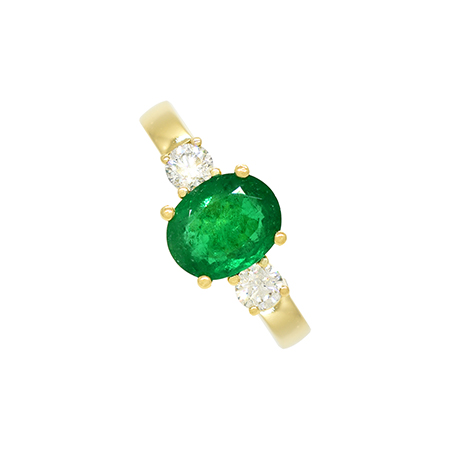
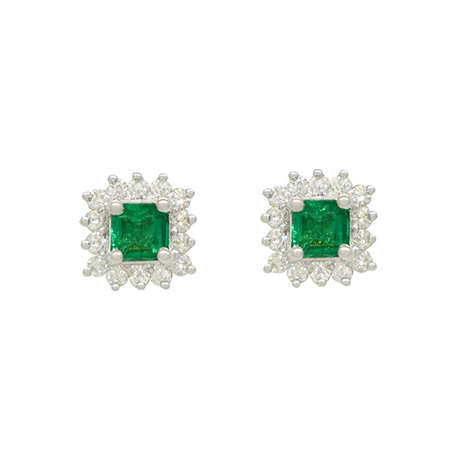
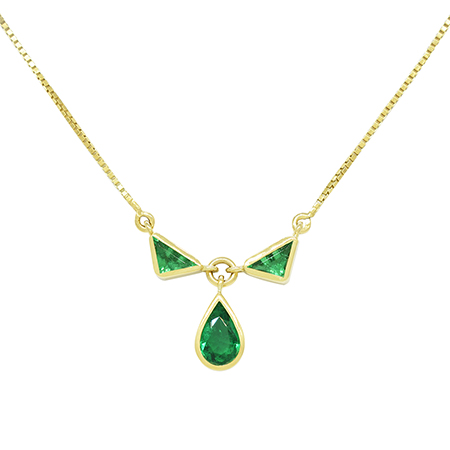
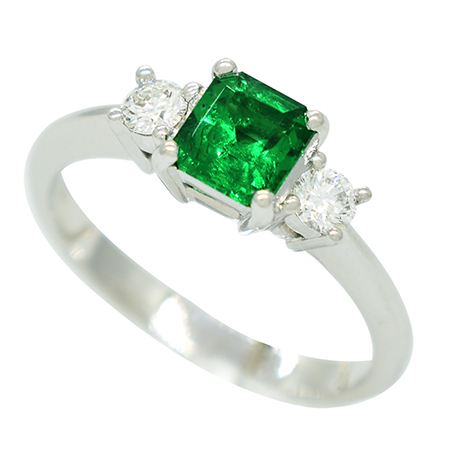


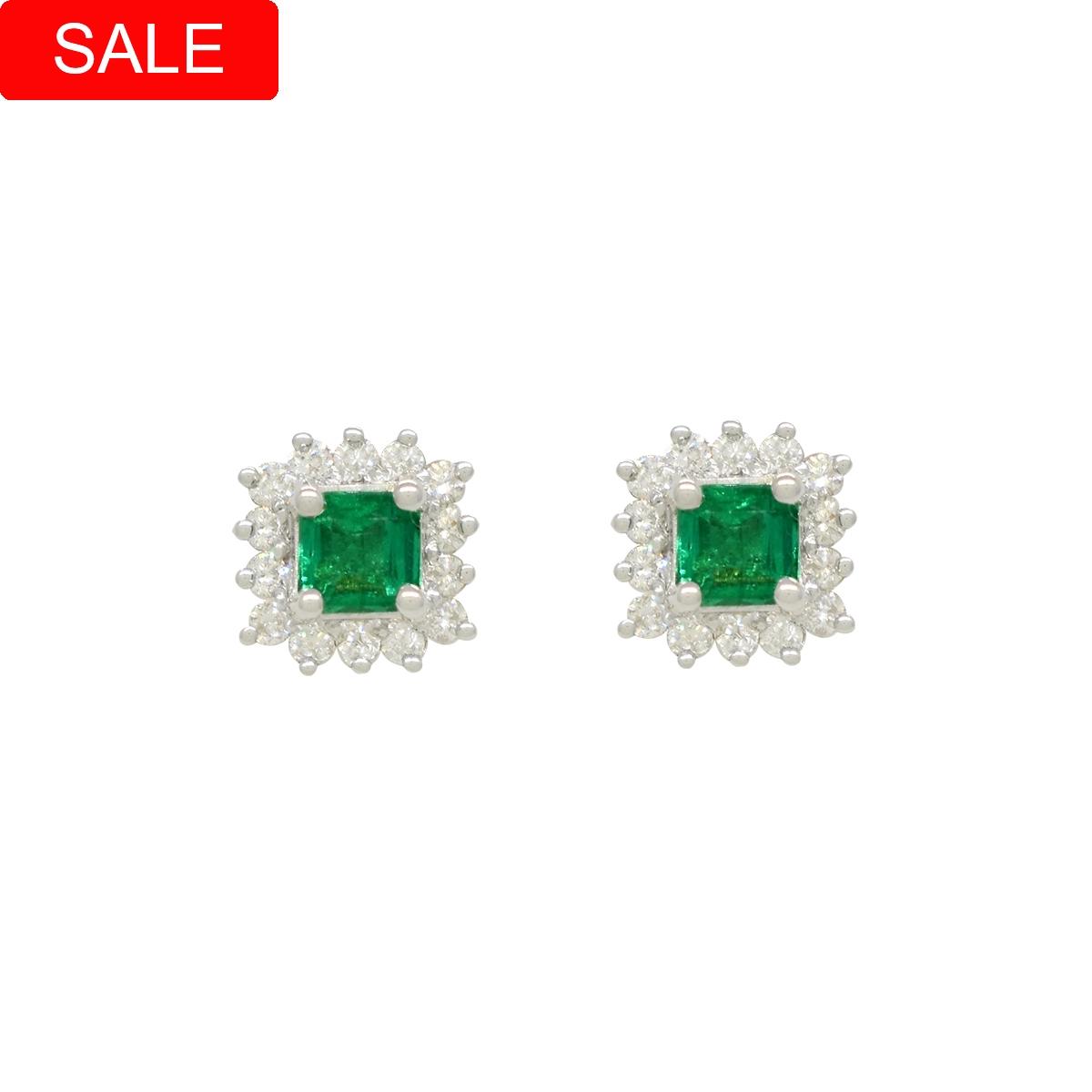 Fantastic matching emerald-cut natural Colombian emeralds, beautifully set with round-cut diamonds in a timeless earrings design
Fantastic matching emerald-cut natural Colombian emeralds, beautifully set with round-cut diamonds in a timeless earrings design